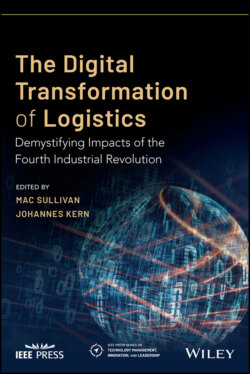Читать книгу The Digital Transformation of Logistics - Группа авторов - Страница 30
Automation Leading in Terms of Return on Investment
ОглавлениеOutsourced manufacturing to the emerging and developing world may have peaked in terms of manufactured goods as tariffs and nontariff barriers (NTB) threaten the effectiveness of cross‐border supply chains (Großer and Weinert 2019). If there is negative growth in the global economy, the 0.8–1.4% productivity gains from automation will decrease the polarization that has previously skewed toward low‐skill, repetitive, and rote work (Manyika et al. 2017). Companies have to utilize their assets, internal capabilities, and cash to “transform their core businesses” in hopes of producing the same outputs with a lower cost or striving to produce new revenue generators, as the adoption of new technologies and entrants of a new form of competitors is encroaching on many economic silos that had been previously untouched (Marco and Lakhani 2017).
Up until the spread of COVID‐19, shareholders had been content with positive returns and had not exerted pressure for automation as they considered the media backlash and subsequent revenue ramifications of subzero job creation. As competition grows fiercer through more transparent marketplaces in a somewhat commoditized and mature industry, potential economic constrictions loom, and increasingly nominal technical factors make automation more realistic. A combination of these factors will erode the societal and governmental protectionary boundaries that have kept workers at their current subsistence levels (Manyika et al. 2017). Low‐skill workers tend to recover fairly well after recessions; however, middle‐skill cognitive workers, like logistics clerks, tend to bounce back slower (Foote et al. 2015).
The pursuit and possibility of near‐zero marginal costs as in the freight market are driving companies to reengineer their current business processes and make them look at automation. Companies are always trying to increase productivity to reduce costs. However, until recently, economists did not think it was possible that technology could push that marginal cost of “communication, energy, and transportation, as well as many other physical goods and services” as close to zero as seen in the “emerging sharing economy” (Rifkin 2015). This is more of a reality today as the cost of automating tasks is dropping at a rapid rate with new emerging technological advancements in computing power and machine learning.
There is a shift away from outsourcing manual labor in terms of both physical and digital tasks, which still have a significant operational expense, toward the capital expenditure of investing in automation. This is looking more appealing as labor costs go up and talent shortages of skilled workers continue to plague R&D leading countries like the United States and China. Logistics company leaders, as representatives of businesses leaders, will be at the forefront of technological change and will be able to take advantage of the efficiency gains offered by technology; however, they must focus on rethinking their business to see how automation can work alongside their workforce rather than think in terms of simply automating tasks using legacy processes (Bughin et al. 2016). See more on this topic in the RPA chapter by Sullivan, Simpson, and Wesley Li, Chapter 5.
